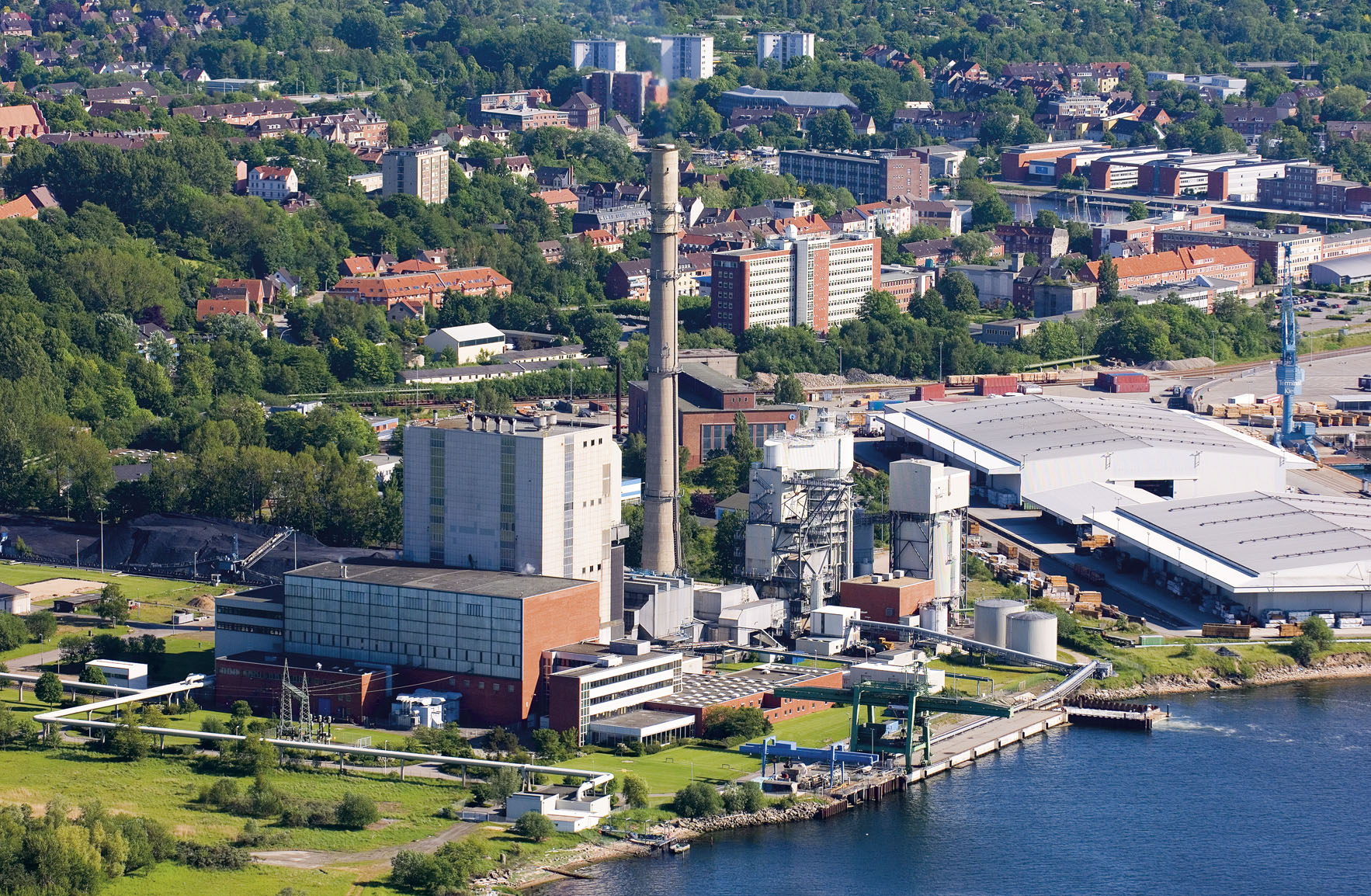Kiel’s planned power plant keeps the heat on, even when you turn out the lights—and cuts carbon dioxide emissions by 70 percent
When you drive your car in winter, the heat thrown off by the engine is used to warm up the interior of the vehicle. Turn the engine off, and you’re soon cold. To stay warm, you have to run the engine, even if you’re parked at the side of the road.
Now imagine your car is a massive power station. Gas engines generate electricity and, in the process, create heat. Most power plants send that heat up chimneys and away. Combined heat and power plants use the excess heat to create warmth, just as your car does. These plants heat water that is, in turn, pumped through the radiators of consumers in their homes and offices.
But what happens when there’s little demand for electricity and at the same time demand for heat is high? Say, in the middle of a winter’s night, when the lights are out and the radiators are on. Combined heat and power plants might have to run wastefully, producing electricity that isn’t needed, just to keep the heat on.
Unless, that is, the energy service company figures out an innovative way to provide heat whenever it is required by the consumer, while producing electricity only when it is needed. That’s what Stadtwerke Kiel is doing with a new combined heat and power plant it aims to bring into operation in October 2018.
EFSI funds for an innovative power plant
The bottom line for residents of the northern German city with this innovative power plant: more efficient generation of heat and electricity keeps prices from rising. “The innovative and flexible concept of the combined heat and power plant helps keep prices for district heat stable,” says Stadtwerke Kiel spokesman Sönke Schuster.
The new plant will also emit 70 percent less carbon dioxide than the coal-fired plant it’s replacing. The plant’s structure is an innovative way to handle the transition between traditional power generation and renewable energy and, because of its energy efficiency, it’s good for the environment. That’s why the European Investment Bank is helping finance the construction with a EUR 105 million loan signed in September under the Investment Plan for Europe’s European Fund for Strategic Investments.

- The existing plant that's to be replaced
Small and flexible
Combined heat and power plants, which are also called cogeneration plants, have been around for a few decades. So where’s the innovation in Kiel’s new plant?
Stadtwerke Kiel’s plant uses a modular design in which power generation is divided between 20 relatively small gas engines, instead of one massive thermal power plant. When a lot of electricity is needed, all 20 can run. When only a small amount is required, Stadtwerke Kiel could run just one of them. This adjustment can be made in as little as five minutes.
“It’s more flexible and addresses the challenges of the German policy for a transition to a low-carbon economy,” says Andreas Heinz, a senior engineer at the EIB. “It refines the art of producing the heat you need only at times when the price of electricity is high enough to be economic.”
The Kiel plant responds to a change in the mix of energy sources as renewable energy makes an increasing contribution to energy markets. Renewable energy sources, such as wind and solar plants, are generally intermittent—they produce power only when the wind blows or the sun shines. That means continuously available sources of energy, such as gas, will continue to be a factor in power generation for some time. After all, the energy network as a whole must be flexible, so that it can pick up the slack when, say, the wind dies down or the sun goes behind the clouds. Modular, efficient plants like the one planned for Kiel can respond quickly to changing conditions and adjust their output. They’re a critical stepping stone to a de-carbonised future.
Keeping Kiel warm
Even after the Kiel engines are turned off, excess heat produced by the engines is stored in a 60 metre-high water tank so that hot water can be siphoned away to keep the city’s residents warm. That’s important in Kiel, where the temperature dips below freezing every day for five months of the year.
Stadtwerke Kiel spent years studying different possibilities and configurations before it settled on its plan. The result will be electricity for 250,000 homes and heat for 70,500 customers from a plant with 190 Megawatts of power generation capacity.
“It’s cutting edge, really ground-breaking,” says Branko Cepuran, an EIB loan officer who worked on the deal with Stadtwerke Kiel. “It’s very important for the Bank to support this kind of innovation in European industry.”
